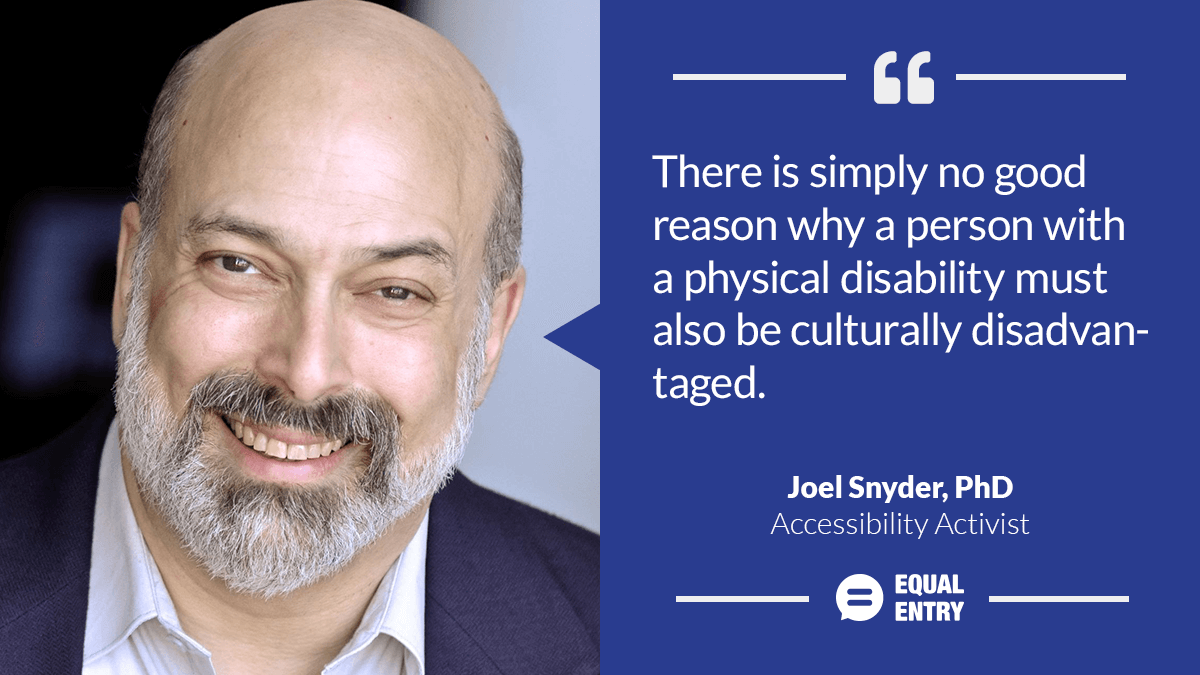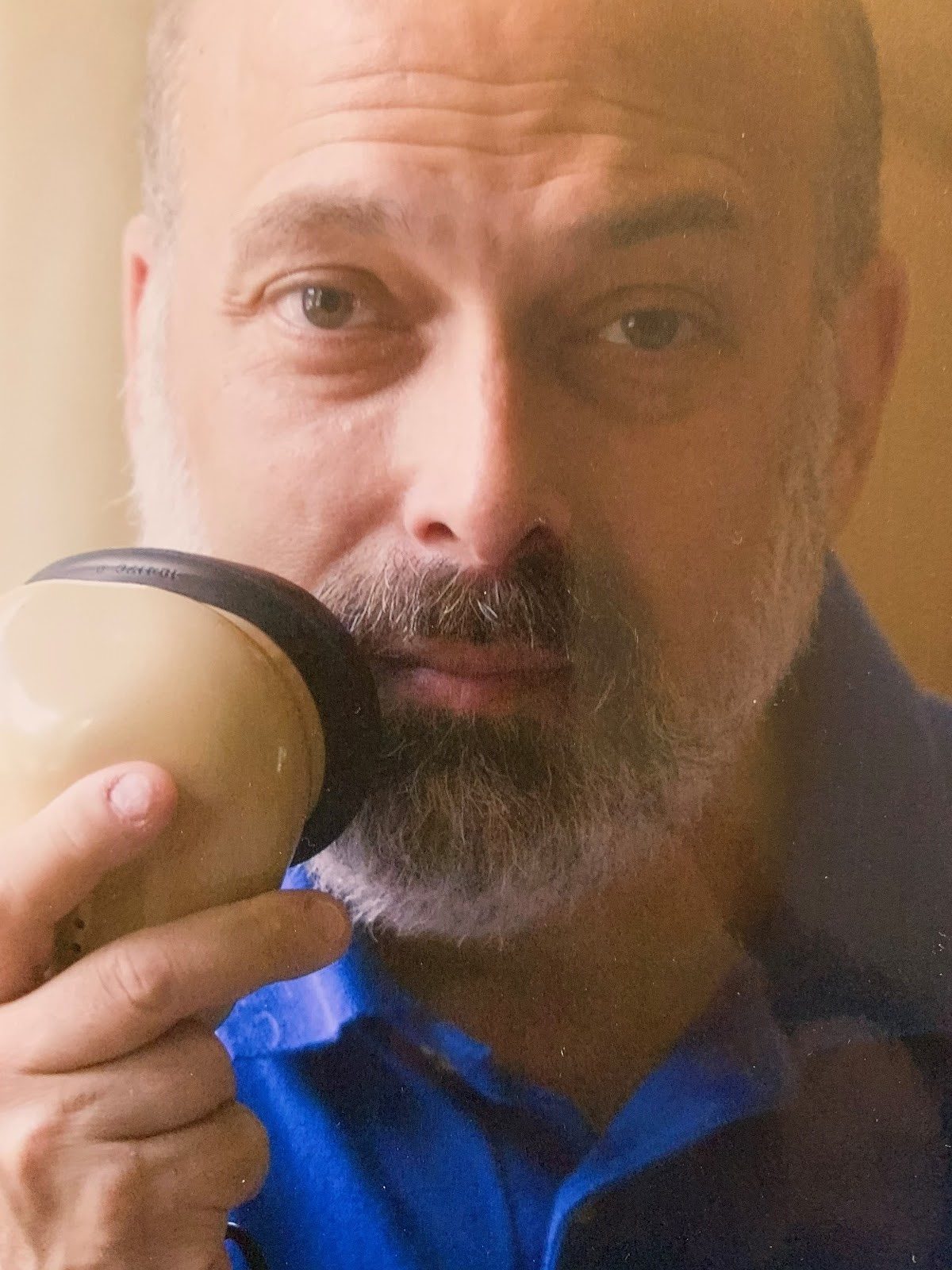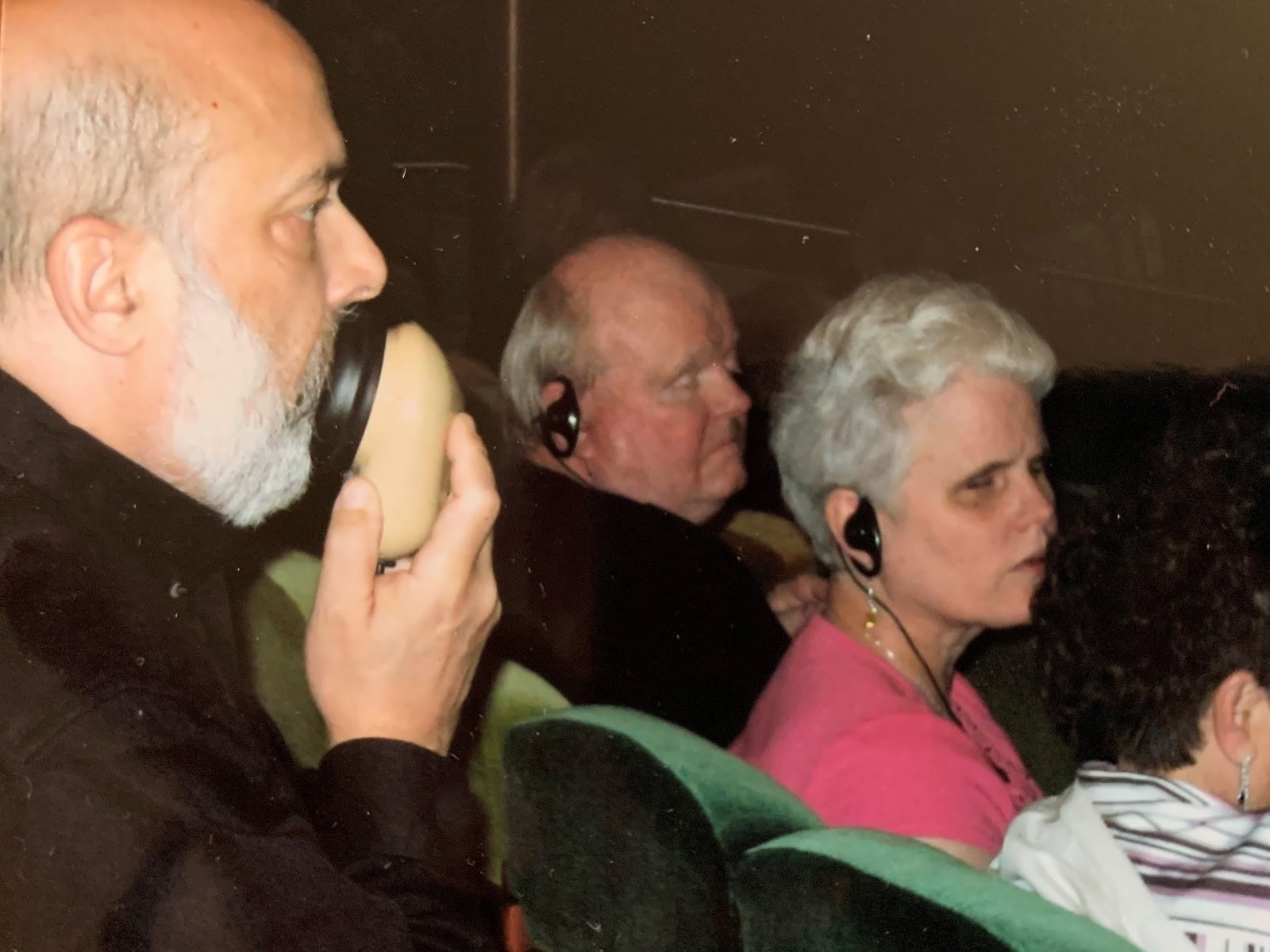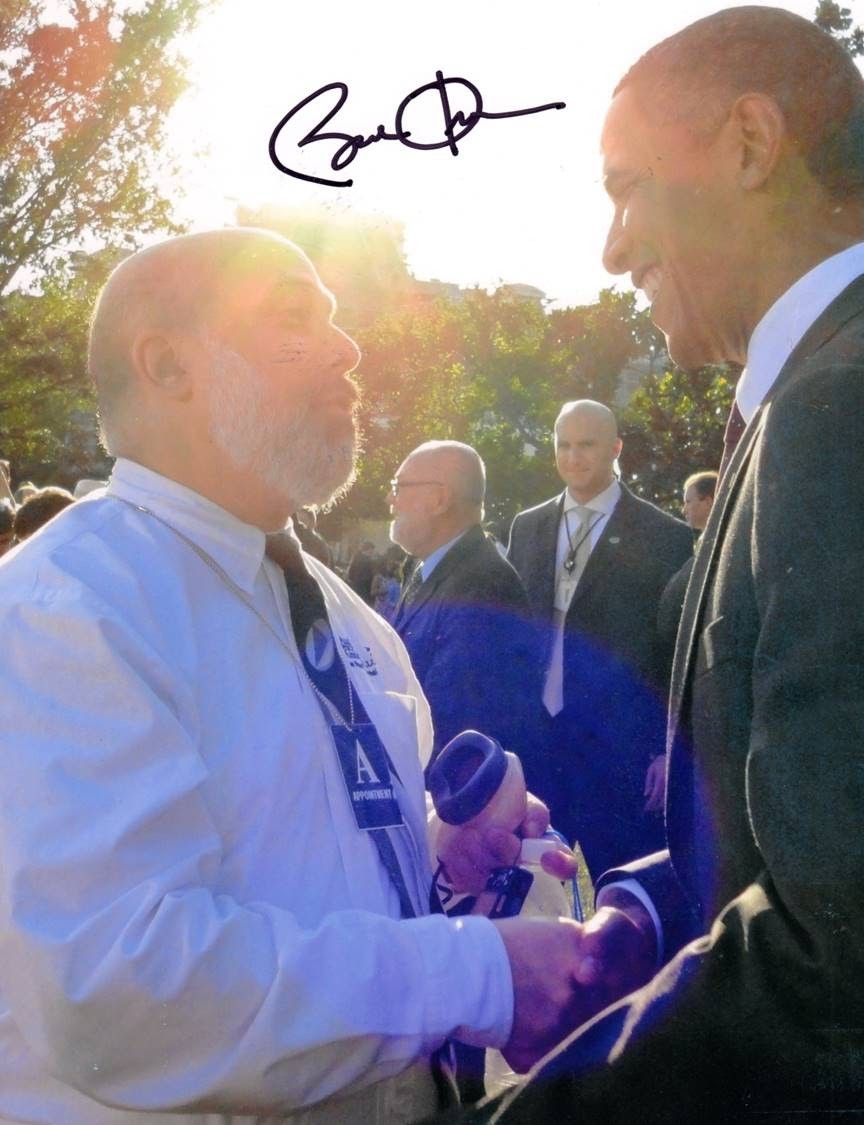Summary

Dr. Joel Snyder is President of Audio Description Associates, LLC and Director of the Audio Description Project, American Council of the Blind. One of the first audio describers, Snyder is a true pioneer in the audio description field.
He’s won many awards including the 2014 Vernon Henley Media Award for promoting and furthering the availability of audio description. He’s also the receipient of the Career Achievement Award in Audio Description of the American Council of the Blind.
How did you get your start in accessibility?
I’ve always been a worker in the arts, primarily in live theater and radio. In the early ’70s, I had the opportunity to use my vocal skills reading to individuals who are blind, recording “talking books” for the Library of Congress, and working with a Washington, DC-area radio reading service, The Metropolitan Washington Ear.
Beginning in 1972, I was a volunteer reader at The Ear and one of my assignments was The Washington Post on Sundays – and just like Mayor LaGuardia of New York in the 1940s (that’s another story!), I became a describer of “the funnies.”

The Ear still exists as a closed-circuit radio reading service for people who are blind or for those who don’t otherwise have access to print. It was founded by Margaret Rockwell, a blind woman with a Ph.D., and a blind man, Chet Avery, who was on The Ear’s original board of directors.
Both Dr. Rockwell — later Pfanstiehl — and Mr. Avery were on an accessibility committee for Arena Stage, a major theater company in Washington. At the Arena committee’s last meeting, the house manager Wayne White recited the list of access features that the group had recommended, emphasizing the recent installation of an “assistive listening system” to boost sound for the benefit of theater-goers who had difficulty hearing.
Folks using the system would don earphones and listen to theater dialogue and music amplified by microphones placed on the stage. White asked: “Is there anything else?” Avery piped up: “There’s one more thing! Could we have the plays described, perhaps using the same listening system?”
Rockwell noted that her radio-reading service had recording equipment (for recording pre-show material) and a core of talented readers who might serve as describers. That was in 1980.
Margaret gathered about five or six of the volunteers that she hand-selected, me among them, and as a part of that small group, we began to define and develop what was to become the world’s first ongoing audio description service.

As a pioneer in the field of audio description, you have developed audio description techniques and training modules employed by over 50 countries. How do you account for cultural context and nuances when approaching international projects?
I think that the basic fundamentals for the training of audio describers apply across genres: performing arts, media, museums, and so on. In the same way, I believe that “the basics” apply across a variety of cultures and geographic regionalisms. But yes, in the practice of providing audio description, cultural contexts must be understood and considered in the development of audio description scripts.
You worked closely with the Disability Rights Committee of the Obama for America campaign in 2008. As America prepares to embark on a new presidency, what are your hopes for the incoming administration regarding inclusion and disability advocacy?
I also had the honor of being a member of President-Elect Biden’s campaign policy committees on the arts and on disabilities. With respect to audio description, I am looking forward to legislation that would expand the number of hours of television broadcasts that must include audio description and would mandate an increase in the percentage of described programs annually (as was the case with captioning — now captioning is required for virtually 100% of television broadcasts).
The legislation that began the mandate for audio description went into effect in 2012, the 21st Century Communications and Video Accessibility Act (CVAA). So I hope that the next administration will support a “CVAA 2.0.”

What is an accessibility barrier you would like to see solved?
Two prospects on the horizon hold special promise:
Accessibility as an Aesthetic Innovation: When I coordinated funding for multidisciplinary categories at the National Endowment for the Arts, I developed guidelines language that invited applications for funding of access projects that represented aesthetic innovation.
In the same vein, Dr. Deborah Fels of Ryerson University in Canada posits that “Accessibility can be entertaining.” The Ryerson website notes that “Video description and closed captioning (can be) an integral part of the creative process. Normally this work is done by a third party after the film is complete.
We are working with the creative team to write these tracks at the same time they put together the show. Artists are very happy to do this. They love their work, and they understand what’s important.” For instance, in every episode of CTV’s Odd Job Jack, an animated production from Smiley Guy Studios, there is an extra track narrated by one of the characters.
Spectrum Access is a smartphone application that has the capacity to deliver captions, enhanced audio, sign interpretation, foreign language audio, and audio description tracks to any movie theater or at home. This targets not only the more than 26 million Americans who are blind or have trouble seeing even with correction but also the hundreds of millions of moviegoers worldwide who are not fluent in the local language and exclude movies from their leisure activities.
The free app downloads an encrypted audio description soundtrack to the device and syncs the audio description to the original audio of the film or television broadcast. It is my hope that more content owners will work with access advocates to make the audio description tracks for film and video far more easily accessed.
With 8 percent of our population who are potential audio description consumers, why should a broadcaster — or any institution — not wish to tap such a significant and underserved portion of the population?
There is simply a lack of awareness of the need and a misunderstanding of the public benefit that could result from reaching out to this population, not to mention the financial benefit that might be gleaned from this untapped market. But fiscal considerations aside, there is simply no good reason why a person with a physical disability must also be culturally disadvantaged.
Finally, here in the United States, the principal constituency for audio description has an unemployment rate of about 70 percent. I am certain that with more meaningful access to our culture and its resources, people become more informed, more engaged with society, and more engaging individuals — thus, more employable.
I have had the privilege of learning from and working with Joel Snyder over the years. He is the acknowledged dean of audio describers and rightly celebrated for his seminal role in promoting accessibility to visual culture for blind and visually impaired people throughout the world—and not only for theatre, but film, TV, graphic and performing arts—including dance, museum exhibits, and even national parks. His work has opened new worlds by making the visual audible.